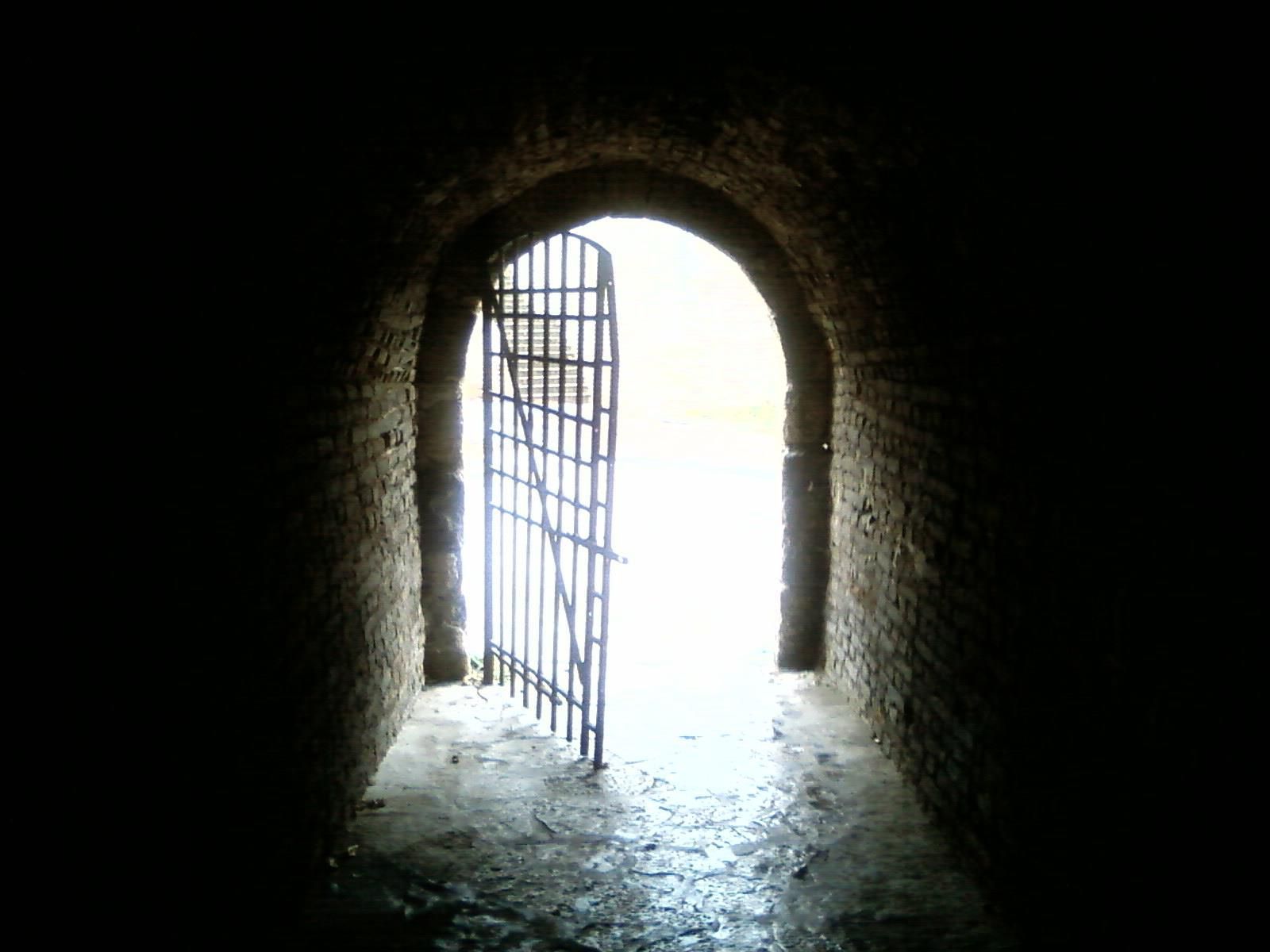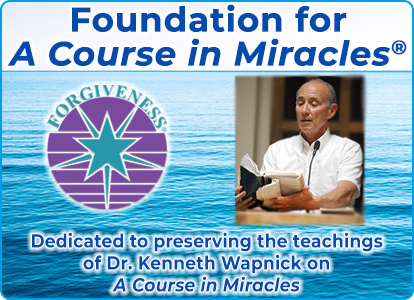
Best Viewed in Landscape
Kenneth Wapnick on looking at injustice in the world
Kenneth Wapnick on
looking at injustice in the world
Kenneth Wapnick on looking at injustice in the world
Excerpted from
“Bringing the Evil-Doers to Justice”
From the Lighthouse (Volume 14 Number 1 March 2003)
As an aid to seeking Jesus’ help when confronted by perceived injustices, one can think of Dr. Martin Luther King’s inspired words of seeking to find the moral center as the means of resolving disputes. Similarly, A Course in Miracles asks us to go to the quiet center (T-18.VII.8:2), in which love does not oppose. It is that state, in which no one is seen as separate or different from anyone else, that truly becomes the reflection of Heaven’s Oneness. It is that place of rest (T-18.VII.8:1) that becomes our home away from Home, the home of true justice. From that stillness, in which love abides, we are able to hear the plaintive cries for help that had been concealed by the raucous shrieks of cruelty, evil, and hate. Within each of us separated ones lies a little child—feeling orphaned, abandoned, and without hope of ever returning home—desperately calling out for a comforting hand that would lead it down the gentle path of forgiveness. To hear that call in one is to hear it in all; to deny it by ears blocked with angry calls for justice—however justified these calls may seem to be—is to deny its presence in oneself. Why, Jesus asks us in A Course in Miracles, would we seek to withhold salvation from our brothers, when such withholding denies it to ourselves?
And so, when the government bombards us daily with the rhetoric of bringing the evil-doers to justice, and the search for peace seems futile, to say the very least, that is when we need the experience of peace. Yet it cannot come within a dualistic perspective in which there is a perceived conflict between two or more parties—individuals, cultures, governments, points of view, etc. Peace can come only from a position above the battleground, within which, once again, all participants in the conflict—the “good guy,” the “evil guy,” the observer—are seen as the same. That is the vision the miracle brings:
Each miracle is an example of what justice can accomplish when it is offered to everyone alike. …because it does not make the same unlike, it sees no differences where none exists. And thus it is the same for everyone, because it sees no differences in them. Its offering is universal, and it teaches but one message:
What is God’s belongs to everyone, and is his due (T-25.IX.10:4,7-10).
What belongs to everyone is the Oneness of His Love, given to His one Son in His creation. Exempt anyone from this Oneness, and we have exempted the whole of the Sonship. If we wish justice dispensed to us, then we must give it. That is the law of God as reflected in this world. Only then can we be sure that if we act in the world it will be as a reflection of the Holy Spirit’s justice of sameness, itself a reflection of Heaven’s Oneness. And make no mistake, nowhere in A Course in Miracles does Jesus suggest that we not act in the world; only that we not act alone. That is the meaning of this lovely passage from “I Need Do Nothing” on the quiet center:
Yet there will always be this place of rest to which you can return. … This quiet center, in which you do nothing, will remain with you, giving you rest in the midst of every busy doing on which you are sent (T-18.VII.8:1,3).
Our actions, therefore, are born of the Holy Spirit’s principle of salvation:
… no one can lose for anyone to gain. And everyone must gain, if anyone would be a gainer (T-25.VII.12:1-2).
We act therefore without malice or judgment, without a desire to punish or hurt, but simply to express in the symbolism of our words and actions the message of forgiveness and peace, a message that comes from Oneness, expressed to a Sonship perceived as one.
All of this makes no sense if seen from the battleground. For within the limited, not to mention distorted, perspective of the world of separate bodies, such perception of all people being both innocent and guilty is incomprehensible. The “evidence” of good vs.evil is incredibly weighted against such all-inclusive perception. Yet from above the battleground, where Jesus asks us to join him, it all looks so different. Attempted alone, his vision of justice can never be attained:
Justice is the Holy Spirit's verdict upon the world. Except in His judgment justice is impossible, for no one in the world is capable of making only just interpretations and laying all injustices aside (M-19.1:6-7)
Thus we should undertake our practice of justice with humility, the humility that says:
Let me not forget myself is nothing, but my Self is all (W-pII.358.1:7; italics omitted).
That Self is God’s one Son, whose living and loving Oneness is reflected here by the perception of shared interests. Thus do we see all people calling out for the same love they feel they attacked; all people calling out for the same answer that tells them their attacks are forgiven; all people calling out for the same peace that alone can heal pain and suffering, and restore to their shared awareness the Love of God, the power of which corrects all error and softly leads to the “peace that passes all understanding” (Philippians 4:7), the “peace that is not of this world” (M-20.1:1).
Only through true forgiveness can the evil-doer within ourselves be brought to the justice of Heaven, God’s Final Judgment which embraces all His children in His Love:
You are still My holy Son, forever innocent, forever loving and forever loved, as limitless as your Creator, and completely changeless and forever pure. Therefore awaken and return to Me. I am your Father and you are My Son (W-pII.10.5:1-3).
In such forgiving judgment does the theoretical understanding of justice-to-heal become part of our daily and lived experience: Pogo’s us not only contains the enemy, but also our one Friend (W- I.194.9:6), and each of us, without exception, is an integral part of His loving Oneness and kind justice.
(Copyright 2003 by the Foundation for A COURSE IN MIRACLES)

